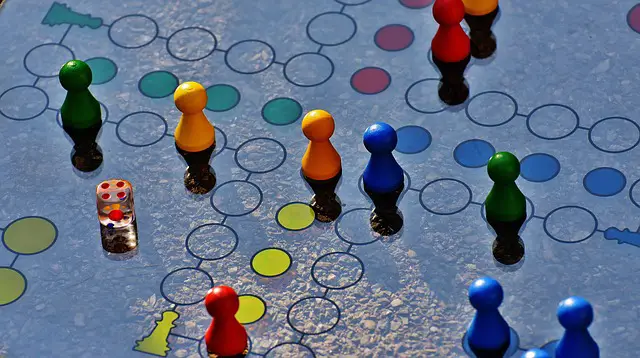There are board games that do have many of the same principles of trading the financial markets. The following games can help a trader develop winning strategies, create an edge, understand game theory, probabilities, math, and human psychology.
Chess is a game of pure skill with little to no luck involved. It can teach traders how to think and be accountable for the results of their own decisions. The key to chess is position and anticipating the actions of your opponent. Players learn to make good trades between their pieces and their opponents. Players must manage against the risk of ruin of checkmate.
Risk is a great game for teaching probabilities, math, and creating good risk/reward ratios. This is a great game for teaching risk management, managing the risk of ruin, creating a mathematical edge and understanding your opponents psychology.
Monopoly can teach players about buying, selling, and trading properties for profit and becoming rich in the game. There is also the risk of bankruptcy. This is a game of basic economics and can show lessons in behavioral economics when players act irrationally overpaying for assets when there is the fear of missing out.
Catan Board Game players represent groups that are establishing colonies on the island of Catan by building settlements, cities and roads. Players must spend resources they collect throughout the game. Resources are gathered either by random dice rolls at the start of each player’s turn, or through players negotiating trades among each another.
This aspect of trading is where most of the game lies. The game is played on a modular board that can change every game because of the random dice rolls some resources can be abundant in one game but rare in other games so their value can vary a lot. Traders will like the action and competition against their opponents to always be on the best side of a trade. The winner of a game is usually the person who was able to make the best trades throughout the game.
The Stock Market Game for Traders doesn’t have a board but it is a card game that teaches the importance of position sizing, risk management and the risk of ruin.
You will use all of the twelve face cards, two jokers, three of the 2 numbered cards, two of the 3 numbered cards, and one each of the 4, 5, and 9 numbered cards for a total of twenty two cards to be used in the game.
Players will then decide how much they want to bet on each card drawn from the deck of cards remaining in the game. For example if you start to play with an imaginary $100 in your simulated trading account you can bet $1 for 1% of your capital, $2 for 2% of your capital, etc. This is a quick and easy way to understand the importance of position sizing and stop losses in trading.
The card you draw from the deck determines the outcome of your imaginary trade.
Face cards = Lose whatever you bet. (Bet $1 lose -$1)
Joker = Lose 5x your bet. (Bet $1 lose -$5)
2 = Win double whatever you bet (Bet $1 win $2)
3 = Win triple your bet. (Bet $1 win $3)
4 = Win quadruple your bet. (Bet $1 win $4)
5 = Win 5X your bet. (Bet $1 win $5)
9 = Win 9X your bet. (Bet $1 win $9)
